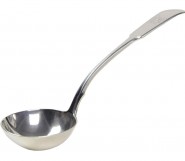Lot #1 - John Perceval
-
Auction House:Deutscher and Hackett
-
Sale Name:The Gould Collection of Important Australian Art
-
Sale Date:15 Mar 2017 ~ 7pm
-
Lot #:1
-
Lot Description:John Perceval
(1923 – 2000)
Acrobat Angel, c.1958
glazed earthenware
38.0 cm height
signed on base: Perceval -
Provenance:Private collection, Melbourne; Gould collection, Melbourne, purchased from the above in 1999
-
Exhibited:probably: John Perceval’s Angels, Museum of Modern Art of Australia, Melbourne, 2 – 12 September 1958
-
Notes:RELATED WORKS: The Acrobat Angel, 1958, glazed earthenware, 28.0 cm height, collection Art Gallery of New South Wales, Sydney ESSAY: John Perceval’s celebrated series of cherubic yet mischievous angels dazzled audiences and critics alike from the moment of their public unveiling in 1958 at the Museum of Modern Art in Melbourne. Such was the impact that the prominent historian Bernard Smith called it ‘one of the most important one-man shows held in Australia since the war.’1 An augmented exhibition travelled to Terry Clune Galleries in Sydney the following year where the show was opened by William Dobell. Prior to this, the artist was known predominantly for his paintings – particularly those of the boats at Williamstown – and for the range of exuberant, decorated ceramic ware he made for the domestic market with his brother-in-law Arthur Boyd. Perceval, Boyd and the philosopher Peter Hebst had established their pottery studio and business in a former butcher’s shop in Murrumbeena in 1944. Fortunately, Perceval painted numerous views of the pottery workshop in action, such as The Pottery, 1948 (Deutscher and Hackett, 4 May 2016, lot 10), which captured the rambunctious atmosphere of the working conditions and, critically, the active and welcome appearance of children as they played amongst the potters. Indeed, his own children became the perfect models for the Angels, particularly his second oldest daughter Celia (‘Winkie’) who had a distinctively wide grin. Acrobat Angel, c.1958 is a beautifully crafted testament to Perceval’s extended training in the medium, and is the unclothed, mirror-image companion to The Acrobat, 1958 (Collection: Art Gallery of New South Wales, Sydney). A photo of the artist in the process of creating The Acrobat at his Canterbury home-studio reveals his use of chopsticks to hold up the extended arm as it dries, with balls of clay underfoot as extra support. The glaze too is of particular note as it is the result of Perceval’s pursuit of an elusive ancient Chinese recipe known as sang-de-boeuf, a green glaze that turns red and gold as the heat within a kiln is lowered. Using whatever he could find to adjust the temperature (including scraps of lino and other rubbish), Perceval finally chanced on naphthalene as the perfect additive after some forty experimental firings. The deeply mottled red lustre of Acrobat Angel is a wonderful example of this DIY technique and enhances the expressive possibility that this particular angel may also be a bit impish as well. It is also an increasingly rare example with only seven Angels appearing at auction this century. By the time Perceval commenced the figure series, he had four children and due to excessive drinking, cracks were starting to appear within his marriage to Arthur Boyd’s sister, Mary. As a result, the ceramic toddlers take on an inevitable autobiographical tenor2 and Rob Gould notes from conversations with the artist that Acrobat Angel is in fact a self-portrait showing facial similarities with Perceval’s own ‘artist-as-child’ imagery in such paintings as Boy with Broken Pot, 1943 (National Gallery of Victoria, Melbourne). The late 1950s were also ominous years due to threatened nuclear action in the ongoing Korean War, leading Perceval to later comment that the Angels were ‘more or less … symbols of the world’s survival … war babies, the precious creatures we run the risk of losing.’3 Veering from the innocent to the lewd, passive to the active, and happy to the sad, the Angels are a fascinatingly observed template through which the artist expressed his personal joys and global anxieties. Acrobat Angel is one of a small group of ‘Angel’ earthenware sculptures produced in the late 1950s rarely offered for sale. 1. Smith, B., 1958 in: Smith, B., ‘The Antipodean Artists’, The Critic as Advocate: selected essays 1948 – 1988, Oxford University Press, Melbourne, 1989, p. 146 2. See: Smith, D., Delinquent Angel: John Perceval’s Ceramic Angels, Shepparton Art Museum, Victoria, 2014, p. 10 3. John Perceval quoted in: Hetherington, J., ‘John Perceval. His angels affirm his faith in man’, The Age, Melbounre, 24 March 1962, p. 18 ANDREW GAYNOR
-
Estimate:A$40,000 - 60,000
-
Realised Price:
-
Category:Art
This Sale has been held and this item is no longer available. Details are provided for information purposes only.










